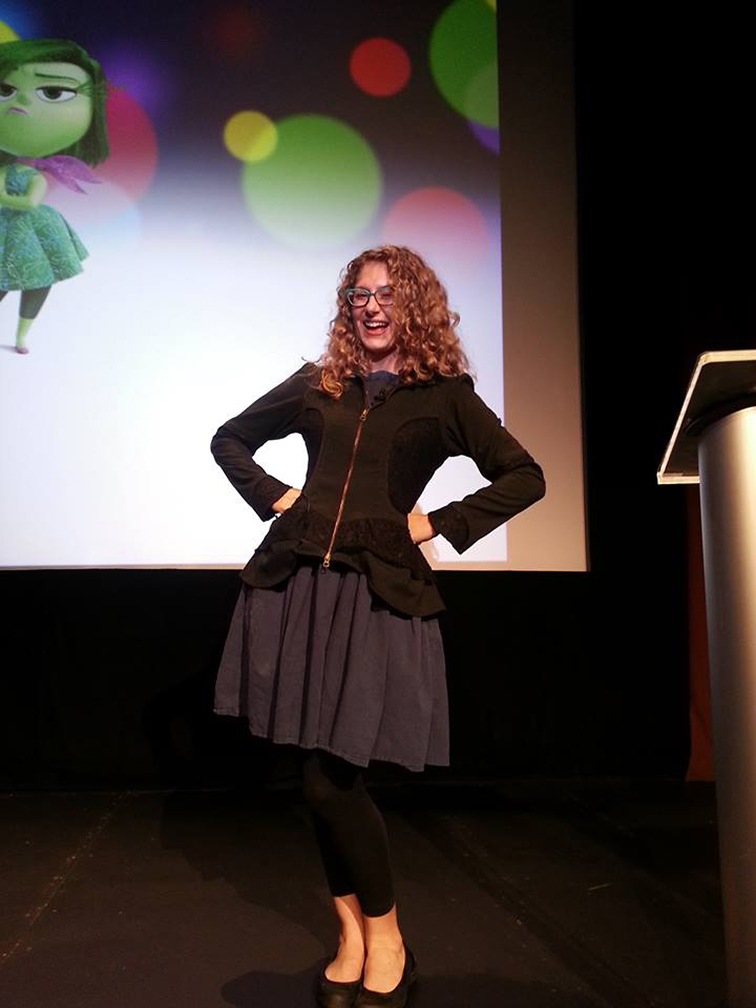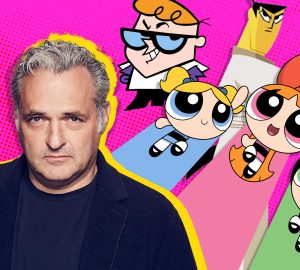Animator Fran Kalal discussed the making of Pixar’s ‘Inside Out’

Fran Kalal, cloth and simulation technical director for Pixar Animation Studios, gave a lecture about her work, the Pixar production process and the making of “Inside Out” at SCADshow on April 22.
Kalal earned her bachelors and masters degrees at Ohio State University and started at Pixar right after college with a character and set shading internship before being hired for a digital tailoring position in 2007. She began working as a prop and set shading artist for the short film “Presto” and then moved on to work as a character shading artist for some of the background robots in the Academy Award-winning film “WALL•E.” From there Kalal worked as a shot simulation artist on another Oscar-winner “Up,” and designed Carl’s late wife, Ellie’s costumes before tailoring “Brave” protagonist Merida’s dresses.
After providing the audience with her animation background, Kalal showed a Pixar film montage including classics like “Toy Story” and “A Bug’s Life” among others, followed by behind-the-scenes footage of employees at Pixar Animation Studios.
Pete Doctor, director of “Up” and “Monster’s Inc.,” stepped up to direct “Inside Out” and based the concept of the movie on his daughter, who after turning 11, didn’t seem quite like herself anymore. As a result, Doctor wondered what was going on inside her head.
“Inside Out” is about the interactions between five emotions that live in tween girl Riley’s head. Joy (Amy Poehler), Sadness (Phyllis Smith), Anger (Lewis Black), Fear (Bill Hader) and Disgust (Mindy Kaling) all reside in the headquarters of Riley’s mind and are in charge of creating and documenting Riley’s memories. But when Joy and Sadness are split up from everyone else, they must find their way back to headquarters and learn that each is just as important as the other.
Kalal showed a complex chart that illustrated the Pixar production process where a team of 350 people work down two separate paths to complete the film. First, there’s the time path which accumulates all time-based aspects of a Pixar production like story, editorial, layout and animation. Secondly, there’s the assets like art, character mediums and paint/graphics that rely less on a timely schedule. Pixar employees are divided between these two paths and work simultaneously to make sure the film gets finished by a certain deadline.
Kalal also stressed the importance of storyboarding as a planning tool, saying: “the storyboarding team had to ask ‘how does the mind work?’ This led us on a five year journey to find the answer.” Whereas other films like “Cars” and “Toy Story” offered tangible references that animators were able to draw from, the “Inside Out” animators had limited resources for imagining the inner workings of teenager’s mind.
Pixar representatives spoke to psychiatrists, psychologists and neurosurgeons to find out the mechanics of the mind. These professionals had several ideas regarding how many emotions govern the human mind with opinions ranging from zero to six to 27; but Pixar decided to limit the emotions to five.
In the end, Pixar animators constructed Riley’s long-term memory as a library full of shelves packed with memory spheres where color and brightness are used to associate the memories with different emotions and vividness. For example, a bright blue sphere evokes a strong sad memory while a dull purple sphere evokes a hazy fearful memory. Animators also experimented with color and luminosity in character development. For example, they sought to convey Joy as an emotion made of light by playing with fog, particle and glowing effects to capture her iridescent nature.
Kalal was also kind enough to walk the animator-heavy audience through the evolution of a shot through these steps:
- Storyboarding of the characters and setting.
- Color script of the characters and setting.
- Modeling and rigging for character movement, hair, cloth, textures and colors.
- Constructing the topology of a set by working with mesh, shading, hand-painting and photographs.
- Layout of the shot and use of camera as a character element to create the mood of a scene. For instance, if the camera widens from a close-up shot quickly, a certain amount of stress or tension is brought to the scene.
- Lighting designers do their part and the rendering department fixes all mistakes and makes sure all of the animation is on the same plane.
Kalal also surprised the audience by revealing the first seven minutes of “Inside Out.”
After the lecture, SCAD animation professor Matthew Maloney conducted a question and answer session with Kalal. Kalal mentioned that one of the reasons why Pixar hired her was that she happened to include sewing as one of her hobbies on her resume at which point Pixar informed her that they were looking for a cloth and simulation animator.
“One of the things that surprised me was the adjustment of working 9-5,” Kalal admitted. She encouraged the audience to “Think of your career as a marathon, not a sprint, and challenge yourself with a deadline to avoid hitting the overtime switch.”
“I love that animation is a team sport,” Kalal also said. “I had to know that it’s ok to struggle by yourself for five to 10 minutes with a problem, but at 15 minutes, know it’s time to get up and ask your co-workers questions.”
Kalal notified animation students that big companies like Pixar are interested in recruiting employees with specialized fields and listed numerous technical director positions Pixar offers: modeling, shading, stereo, rigging, cloth and hair, set modeling, set shading, simulation, effects, crowds and lighting.
Finally, Kalal offered advice to student animators looking to work for Pixar after college: “If you end up applying to a Pixar internship, only include your best work and leave the ‘meh’ stuff off.”
She recommended Khan Academy as a good place to practice coding and re-applying to Pixar three or four times if you aren’t accepted right away. Kalal also encouraged animators to work at different companies first in order to gain other experience and skills.
“Inside Out” is set to release in theaters on June 19.



























